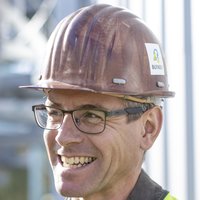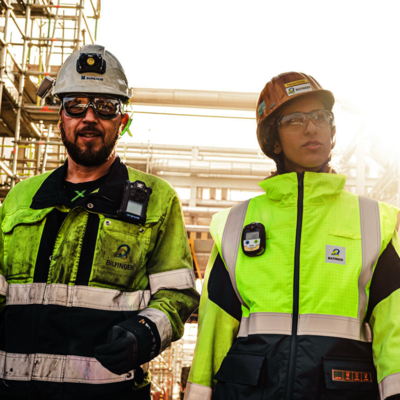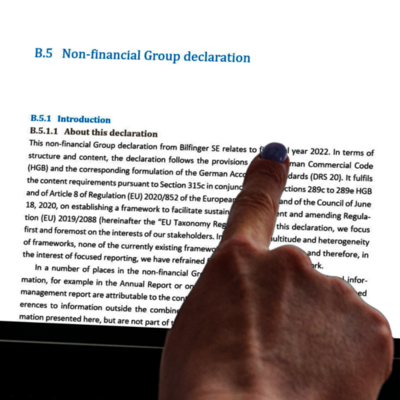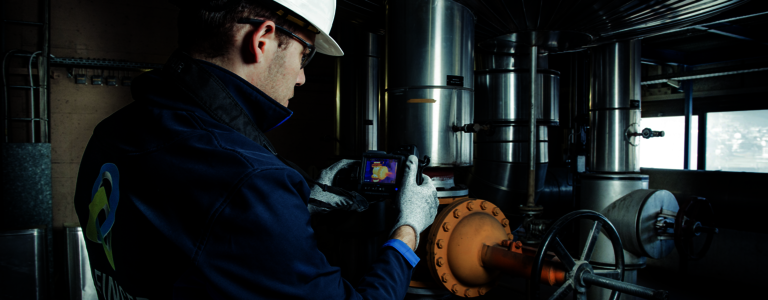
Environment
Climate neutral in GHG Scope 1 & 2
until 2030 at the latest

In its sixth report, Climate Change 2022, the Intergovernmental Panel on Climate Change examined the effects of climate change and presented the impact of the man-made share. Global temperatures are expected to rise by 2 degrees Celsius. This poses a threat to the ecosystems of our planet, endangers the health of humans, animals and plants, and can mean that the world’s growing population cannot be adequately supplied with food. Bilfinger therefore attaches particular importance to climate protection.
With our Mission Statement and our Code of Conduct, we clearly commit to responsibility for society and the environment. We consume considerably less energy than manufacturing companies, but we have nevertheless set ourselves the task of making a contribution to a reduction in greenhouse gases.
In the Bilfinger Group, energy consumption data is collected at the level of the operating units. 35 Group companies with 139 locations are certified in accordance with the international environmental management standard DIN EN ISO 14001. That is how operational units have been meeting the requirements of their regional and local customers for many years.
With the introduction of new software in 2021 to record energy consumption and calculate the associated greenhouse gas emissions, we established a structured recording process and allowed for the internal reporting of energy consumption and emissions in accordance with the Greenhouse Gas Protocol (GHG Protocol).
We disclose our climate-related activities through our participation in CDP.
Energy
Energy demand has the most significant direct impact on our greenhouse gas emissions, with the main share of energy requirements coming from our properties and the vehicle fleet.
We use energy from both renewable energy sources and non-renewable energy sources. This differentiation was included in the reporting in financial year 2022.
Energy consumption is reported here in accordance with the Greenhouse Gas Protocol for Scope 1 and Scope 2 emissions for the Group excluding the Other Operations segment.
In the case of non-calendar accounting – for example if the annual statement was not yet available – data for the 2022 figures were completed on the basis of the 2021 figures. In the case of flat-rate rentals, the average consumption value per square meter was calculated in line with similar locations.
The Group’s total energy consumption increased in financial year 2022 by 2 percent to 220,838 MWh (previous year: 217,099 MWh).
For our business processes, we generate energy from renewable and, to a large extent, non-renewable energy sources. This includes, for example, natural gas used to generate heat in properties – or diesel, which is burned as fuel in vehicles. We also purchase energy from external suppliers from various sources and use it to generate electricity, heat, steam and cooling at our sites throughout the Group.
Emissions
The Bilfinger Group’s greenhouse gas emissions are reported in metric tons in CO2 equivalents (tCO2e) in accordance with the method specified in the Greenhouse Gas Protocol. GHG emissions in Scope 1 amounted to 35,643 (previous year: 35,608) tCO2e in the reporting year. For Scope 2, in addition to location-based data, market-based data were also collected in 2022 with the result that Scope 2 emissions were calculated in both variants. Emissions in Scope 2 location-based were 16,548 (previous year: 23,765) tCO2e in 2022 and 14,047 tCO2e when using the market-based calculation. Furthermore, in 2022, emissions in the GHG Scope 3 category waste were also calculated for the first time. In the reporting year, these amounted to 675 tCO2e.
For the reporting, we established organizational boundaries in accordance with the Greenhouse Gas Protocol methodology. We have adopted the financial control approach. This means that reporting is based on the financial organization and takes into account all fully consolidated companies with the exception of those that are in the process of being sold (Other Operations segment).
Direct greenhouse gas emissions originate from sources that are owned or financially controlled by Bilfinger, including purchased in leases relevant to IFRS 16.
Scope 1 includes direct emissions from the burning of fuels for heating and cooling buildings, powering vehicles and machinery and volatilized gases that escape over time from refrigeration units. For Scope 1, this refers to:
- Burning of natural gas, oil and other materials for heating the properties
- Emissions of hydrofluorocarbons (HFCs) from the use of air-conditioning systems in the properties
- Combustion of diesel, gasoline and liquefied petroleum gas (LPG) in owned or IFRS 16 compliant leased vehicles and machinery
Scope 2 includes emissions from the generation of electricity, steam, heating and cooling purchased by the company from utilities (indirect emissions). This relates to:
- Electricity consumption in properties, fleet and machinery
- Purchased district heating, steam and cooling
In reporting on indirect emissions (Scope 2), we distinguish between market-based and location-based methods, following the GHG Protocol Scope 2 Guidance. In the previous year, we reported Scope 2 emissions using the location-based method. This method uses emission factors as an average country value for the relevant sites. We use a database from the provider Ecoinvent for this purpose. The basis for the calculation is the value from the methodology developed by the Intergovernmental Panel on Climate Change (IPCC) 2013-climate change-GWP 100a-(kg CO2-Eq) per 1 unit of reference product.
In financial year 2022, the additional determination using the market-based method was added. This approach takes into account the actual electricity mix of the respective utility.
Scope 1 emissions in 2022 were at the level of the previous year. The location-based value for Scope 2 decreased by 30 percent. The reduction is largely due to an improvement in measurement. Our business model means that we often operate on site at customer plants and also rent properties there. While the calculation of several Scope 2 emissions in 2021 was attributed to the heating type district heating, it turned out in the year under review that it is actually industrial process waste heat. Here, emissions generated by the production plant are attributed to the owner of the plant. Waste heat is generated as a by-product with emissions of almost zero. The smaller portion of the reduction is attributable to the lower number of properties.
The figure for Scope 2 emissions, which was also collected using the market-based methodology for the first time in 2022, amounted to 14,047 tCO2e. This calculation takes into account the specific choice of a company’s electricity tariffs. The market-based Scope 2 emissions figure was 15 percent below the location-based average figure in the reporting year.
In 2022, we developed a concept for the data collection of Scope 3 emissions in accordance with GHG. Due to the significantly greater complexity compared to Scope 1 and Scope 2, we provide for Scope 3 determination in three stages. In financial year 2022, the waste category was collected as the first Scope 3 relevant emission source in Bilfinger’s upstream value chain. Our concept calls for all other categories in the upstream value chain to be successively added in 2023. Categories of the downstream value chain will follow in 2024.
Following the calculation logic of the GHG Protocol, the waste type and quantity as well as the waste treatment method are required to determine the emissions from waste generated, because the emission factors vary accordingly. In financial year 2022, the waste and wastewater category generated greenhouse gas emissions of 675 tCO2e. Because these data were collected for the first time, a comparative figure for the previous year is not available.
Sustainability is at the heart of our corporate strategy. As an industrial services provider, we want to ensure that our customers receive the best possible level of support when it comes to achieving their sustainability goals. Our portfolio of services offers solutions for reducing emissions and increasing plant efficiency. In addition to increasing efficiency for our customers, sustainability and the sensible use of resources are also extremely important for Bilfinger itself."
Total emissions in accordance with GHG Protocol
An overview of the total emissions by scope is shown in the following table. In the coming year, the other Scope 3 categories will be gradually added.
Additionally, we present intensity indicators for both our direct and indirect emissions in order to make the development transparent irrespective of the company’s growth. The CO2 equivalents from Scope 1 and Scope 2 are set in relation to energy consumption, Group revenue and the number of employees. Compared with the figures for which a year-on-year comparison can be made, the intensity indicators show an overall positive development in the reporting year.
Reduction GHG emissions and Science Based Targets initiative
Steps to reduce CO2 emissions were initiated in financial year 2022. Based on the survey of Scope 1 and Scope 2 emissions as well as the complete survey of Scope 3 emissions beginning in financial year 2024, we plan to submit Bilfinger’s targeted reduction path of GHG emissions to limit global warming to a maximum of 1.5 degrees Celsius to the Science-Based Targets Initiative (SBTi) for review. The concept we developed in 2022 foresees the submission of the commitments for 2023 and the submission of the reduction plan to achieve the near term targets by 2030 for Scope 1 and Scope 2 emissions accordingly for 2025. The broader reduction concepts for Scope 3 emissions will be developed based on the data collection for this category.
All regions and divisions of the Group have developed concepts to reduce their respective emissions and thus the emissions of the Group as a whole from 2023 onward in accordance with GHG Scope 1 and 2. The combination of various measures for the next few years includes a shift from purchased electricity to renewable sources, gradually replacing the passenger vehicle fleet with electric vehicles as well as installing photovoltaic systems and initiating energy efficiency initiatives at our sites. In terms of GHG Scope 1 and 2 greenhouse gas emissions caused by our operations, we have set a target of being climate neutral by 2030 at the latest. Most importantly, this includes a reduction in emissions. In the case of unavoidable emissions, compensation is also provided through the support of additional CO2-reducing projects combined with the purchase of carbon credits.
Industrial services to enhance efficiency and sustainability
For Bilfinger as a service provider, customers are the focus of business activities. The relationship with our customers and their satisfaction with the work that we do are of utmost importance for our business development. We are integrated into their value-added processes as a strategic partner.
We pay particular attention to the quality of our services and to delivering a range of products and services that is consistently aligned with the needs of our customers. The aspect of customer focus is thus directly related to our central strategic goal of enhancing the efficiency and sustainability of our customers’ plants through our work.
A Group Executive Management (GEM) was set up in the financial year in order to more closely link the exchange between the Executive Board and the operating units with direct customer contact. The composition and duties of this committee are described in Good corporate governance. Close contact between the Executive Board and the managers with operational responsibility in Group Executive Management brings operations even closer to the Executive Board and further improves the alignment of Board decisions with customer requirements.
Increasing awareness of climate change and the ensuing energy transition in many industrialized countries are opening up attractive market opportunities for Bilfinger as a leading industrial services provider. This is all the more true given that a major share of our customers are active in energy-intensive industries. The chemical & petrochemical, energy, pharma & biopharma and oil & gas industries are the Bilfinger Group’s largest customer groups. As a result of socially and politically mandated energy transition and climate protection measures in all key stages of the value chain, these industries are all facing fundamental innovative leaps. They have the immediate task of enhancing their plants, securing their future energy supply and significantly reducing their carbon footprint in the process.
Our goal is to be the leading partner for our customers when it comes to enhancing the efficiency and sustainability of their plants. This vision forms the basis of our business model and is at the core of our Group’s strategic direction.
Bilfinger’s focus in this regard includes areas of activity in which the company is already established, including nuclear power, hydropower and district heating networks. There are also areas of growing strategic importance such as the production, transport and storage of hydrogen, carbon capture and storage and battery production. With its portfolio of services, the Group is addressing the imminent decarbonization of energy-intensive production, transport and processing operations and increasing energy efficiency at all stages of the customer value chain. Low-carbon energy generation and the reduction of energy consumption and emissions are key here.
Customer segments
Bilfinger’s portfolio brings together services that contribute to increased efficiency and sustainability in various customer segments. This contribution significantly deviates from the specifications of environmentally sustainable activities as defined by Regulation (EU) 2020/852 Taxonomy Regulation (EU Taxonomy Regulation), which is explained elsewhere.
Customer segments
The services described below in the Group’s customer segments represent an excerpt from the broad range of industrial services with which Bilfinger improves the efficiency and sustainability of its customers’ plant:
Bilfinger’s objective is to make a contribution to the increased use of hydrogen as part of a climate-friendly energy value chain. Here, the Group can apply the expertise it has established over the course of many years in the field of gas treatment for the utilization and transport of hydrogen along the entire value chain.
In hydrogen production projects, Bilfinger acts as an independent system integrator. The existing engineering, prefabrication and installation competencies have already been proven in a number of projects.
In the transport and storage of hydrogen, Bilfinger mainly supports the expansion or conversion of existing gas infrastructure. Bilfinger’s experience and capabilities in the field of gas treatment – including in gas drying – position it as a competent partner for technology companies.
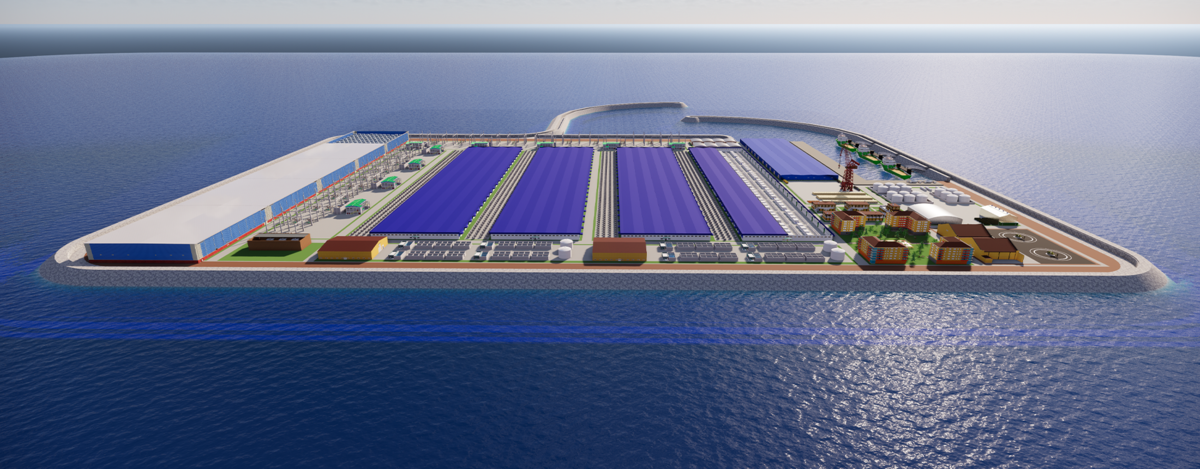
Carbon capture and storage (CCS) is a technology that will play a key role in achieving the goal of climate-neutral industrial production in the years ahead. By capturing CO2 emissions as they are generated and then processing or storing them, the volume of environmentally harmful greenhouse gas emissions can be significantly reduced.
With its expertise, Bilfinger delivers development and support for all aspects of CCS-related technology. This includes the separation of CO2 emissions, their purification, compression and liquefaction as well as their storage and transport. Bilfinger prepares feasibility and environmental impact studies as well as safety concepts while also managing approval processes. The company supports construction of plants through engineering, project management and the procurement, manufacture and assembly of required components.
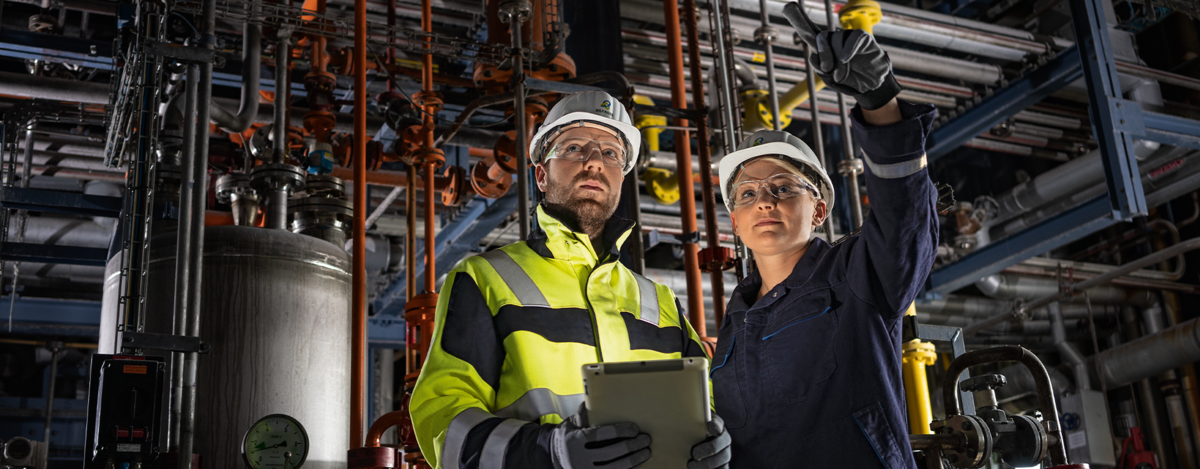
In a growing number of countries – currently mainly the United Kingdom, France and Finland in Europe – nuclear power is considered part of the national climate protection strategy. These countries are counting on modern nuclear power plants to achieve their targets for reducing CO2 emissions with a high degree of energy availability. Bilfinger is well positioned in these markets as a partner for substantial portions of the life cycle of nuclear power plants.
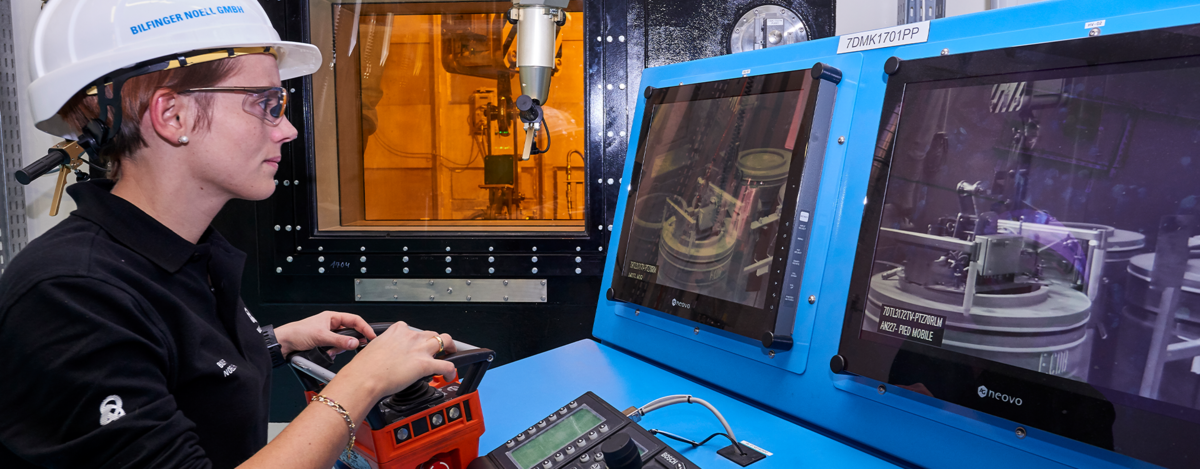
Of regional importance, particularly in the Alpine countries, are Bilfinger’s activities in the generation and storage of energy generated by hydroelectric power. In addition to projects in hydraulic steel engineering for river power plants, Bilfinger also focuses on the assembly of turbines and valves as well as the design and construction of pressure piping systems for pumped-storage power plants. Here the company can offer its customers a complete package from a single source including engineering and manufacturing, assembly and commissioning.

The dynamic growth market of battery production is driven by the trend toward a sustainable reduction of CO2 emissions. Business opportunities for Bilfinger can be found in the engineering and construction of plants for the processing of required raw materials as well as plants for the demanding chemical production of precursor materials for batteries.
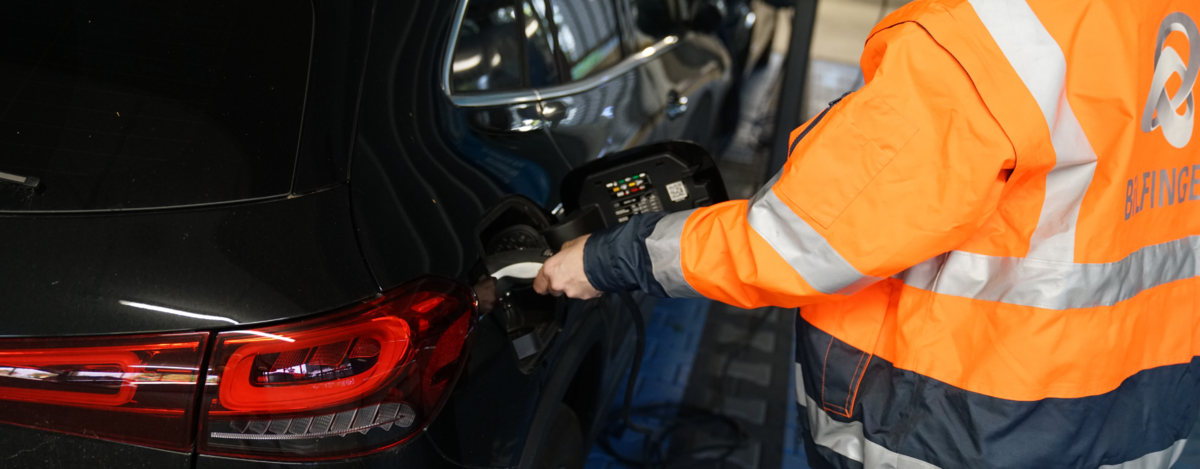
Optimizing municipal supply networks is a key component when it comes to more efficient energy use. Bilfinger has many years of experience in this area, particularly in German-speaking regions. District heating networks in particular offer the possibility of taking waste heat – from industrial processes, for example – and transferring it to different locations for use. But networks based on the same principle can also be used for decentralized cooling, potentially leading to a considerable reduction in energy consumption and emissions.
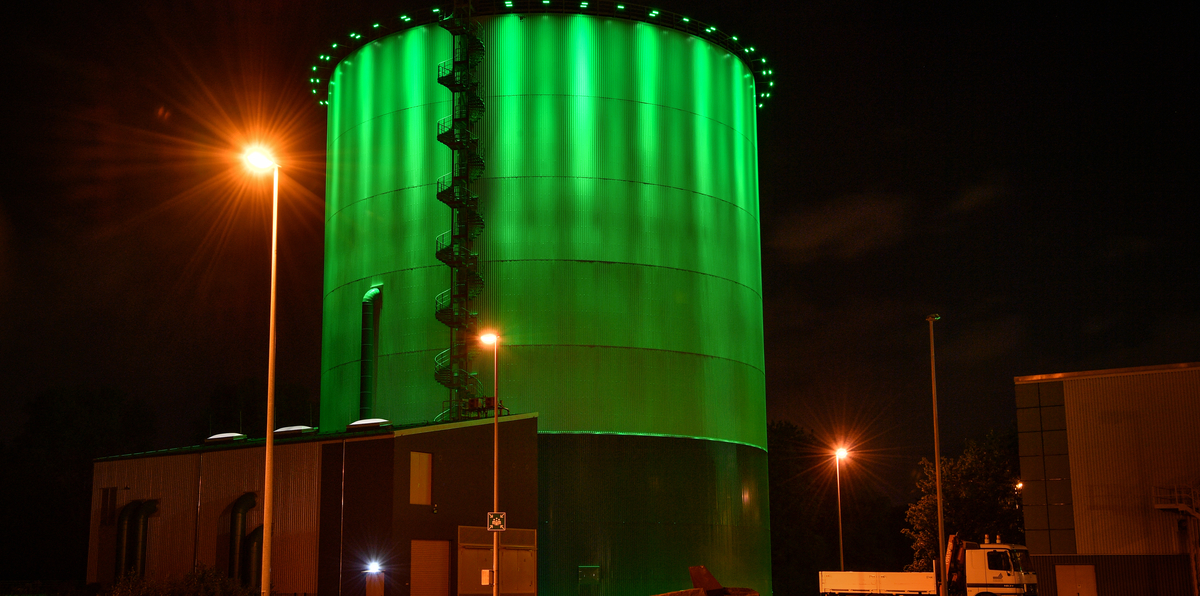
Products
Alongside its focus on these customer segments, Bilfinger also delivers a comprehensive range of products that help enhance efficiency and sustainability to customers in the chemical & petrochemical, pharma & biopharma, oil & gas as well as energy sectors. Measures to increase the energy efficiency of existing plants, for example, can have a significant impact on the reduction of energy consumption and emissions. Despite significant new investment projects in the use of renewable energy sources, CO2 emissions will continue to be largely determined by existing industrial plants in the years to come. These must be optimized and modernized to reduce energy consumption and emissions while maintaining the same capacity utilization.
Measures that can be executed within the framework of the existing infrastructure include, for example, improved thermal insulation. These services are an important part of the Group’s portfolio. A certified analysis method also used by Bilfinger – Thermal Insulation Performance (TIP) Check – can provide information on energy and heat losses through poorly insulated components and thus help to place optimally insulating materials where they are needed.
A more complex energy efficiency method used by Bilfinger is the so-called pinch analysis. It evaluates the cold and heat flows of a process and, in addition to an evaluation of the current situation, also provides a theoretically ideal system status. Based on this ideal situation, Bilfinger then develops an individual energy efficiency concept and proposes modifications to the plant that optimize combined heat and power.
The process industry is facing a transformation if it hopes to achieve corporate and sustainability goals. Plants and processes must become more efficient and sustainable. As a solutions partner, Bilfinger stands by its customers with an extensive portfolio and many years of expertise. "
Sustainable industrial services as a growth market
The basis for measuring revenue in the customer segments mentioned above and with products for enhancing efficiency and sustainability is a detailed recording of customer contracts by plant type and trade.
Total revenue from these activities in the reporting year amounted to €713.0 million (previous year: around €500 million). The increase is attributable on the one hand to significantly higher revenue, and on the other hand to an improvement in the quality of data collection compared with the previous year.
Consolidated disclosures pursuant to Article 8 of the EU Taxonomy Regulation
The EU Taxonomy Regulation is a key component of the European Commission’s action plan to redirect capital flows to sustainable economic activities. It represents an important step toward achieving climate neutrality for Europe by 2050. In this context, the EU Taxonomy serves as a classification system for environmentally sustainable economic activities.
For more information on the EU Taxonomy Regulation, click here.



